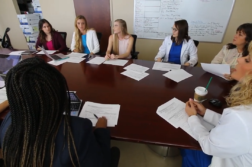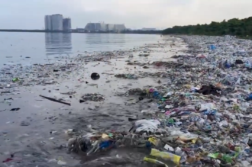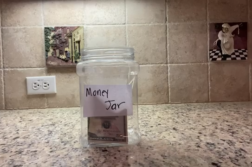TAMPA, Fla. (Ivanhoe Newswire) — Mother nature is hard to peg. But there’s a smart woman who might be on to her. She’s dedicated her career to studying storms. Big storms. 160 mile per hour storms. Storms like hurricane Florence.
This is what a hurricane looks like from space. It’s that big white rotating swirl and from the ground it’s much worse!
“We were scared. We were scared. Very scared.” Said Haraeo Jaimungal, a hurricane evacuee.
The tropical cyclone’s lethal winds can kill thousands and destroy billions of dollars in property.
Jennifer Collins, a Geosciences Professor at the University of South Florida said “with hurricane Irma, it was the largest evacuation in U.S. history.”
Most people in the suspected path of these storms take a two-pronged strategy.
“Let’s board the house up and take off running.” Jaimungal said.
But a lot of people stand their ground.
“We found that even people in mandatory evacuation areas, some were not evacuating their homes.” Said Collins.
Why? Professor Collins says they’re afraid they’ll get trapped in traffic or they will leave family members behind
Or there won’t be any place that will take in their pets. Those who do leave before the storm hits usually …
“have a higher number of social connections that gives you a lot more opportunities in the evacuation process.” Collins told Ivanhoe.
Collins advises everyone in mandatory evacuation zones to evacuate, but first: figure out the closest safe place to wait out the storm. Don’t travel too far. Check google maps, waze or other apps, don’t assume your escape routes are congested and have backup supplies ready, especially extra gas. Collins is hoping her continued research reaches emergency management leaders across the globe.
Collins said, “the importance of this study is ultimately saving lives.”
That’s why Collins doesn’t plan on taking her eyes off these storms anytime soon.
Collins received the prestigious 2019 American meteorological society Edward Lorenz teaching excellence award for her work with students. She’s busy prepping the next generation of hurricane scientists.
Contributors to this news report include: Emily Maza Gleason, Producer; Chris Tilley, Videographer; Roque Correa, Editor.
To receive a free weekly e-mail on Medical Breakthroughs from Ivanhoe, sign up at: http://www.ivanhoe.com/ftk



